Spherical (dome) houses: designs, layout features
Spherical, domed dwellings have been known for a long time - yarangas, plums, wigwams, etc. - built on this principle. They are distinguished by their high stability and ease of construction, which earned the popularity of our ancestors. But domed houses in their pure form, as a phenomenon of modern construction, appeared not so long ago - approximately in the second half of the last century. When the American scientist Fuller decomposed the dome structure into simple figures - triangles, from which the entire structure is often assembled. It is on this principle that many spherical houses are built today.
The content of the article
Dome houses: technologies and their features
Dome or spherical house are the names of one building technology. Actually, the name reflects the peculiarity of this type of housing construction - the house is not rectangular, but made in the form of a hemisphere. Rather - in the form of a polyhedron, approaching in appearance to a sphere.
This shape better withstands wind and snow loads, with an equal building spot with a rectangular one, has more usable area. But in such a house there is hardly at least one rectangular or square room. At least one side will be uneven. This complicates the layout, decoration, selection and installation of furniture. Most likely, all or most of the furnishings will have to be made "to order", according to their own sizes and sketches.
Dome houses are being built, mainly using frame technology, so that the construction is lightweight. The frame is assembled from a bar or metal pipes, sheathed with sheet building material (plywood, OSB). Insulation (expanded polystyrene, mineral wool, foam glass, ecological materials such as jute, dried algae, etc.) is laid between the frame posts. That is, apart from the unusual shape, there is no news, the materials are selected as for an ordinary frame house.
Dome houses are also made of monolithic reinforced concrete. But this technology is used infrequently, especially in our country, where lumber is sometimes cheaper. If we also take into account the need for good thermal insulation of the concrete dome, its unpopularity becomes clear.
With the frames of domed houses, not everything is so simple. There are two technologies by which they are assembled: geodesic and stratodesic domes. They have their own characteristics that can influence your choice.
Geodesic dome
The dome is divided into triangles, from which the polyhedron is assembled. The peculiarity of this technology is that a large number of beams converge at one point. To ensure their reliable fixation, connectors are used - special devices made of steel, which allow reliably connecting the elements of the supporting structure. Each of the connectors costs from 600 to 1500 rubles ($ 10-25).
Despite the fact that the number of connectors is in the tens or even hundreds, their presence greatly affects the cost of construction. Those who plan to build a domed house with their own hands try to do without connectors or make them on their own too. The reasons are clear, but if the connection strength is insufficient, the building can collapse under loads. So you have to be very, very careful with the savings on this site.
By the way, when using wooden beams, there is a connectionless technology, but the assembly of such units requires a high level of carpentry skill and precise execution. And one more thing: they are not as reliable as connections with metal connectors.
The advantage of this type of frame is its stable construction. When 35% of the elements are destroyed, the dome does not collapse. This has been tested in seismically active regions, with hurricanes. This stability makes it easy to remove a number of jumpers. That is, the opening under the doors, windows can be made anywhere, in almost any size. The only thing to consider is that the windows will be triangular. There is no escape from this in this design. For many, this is a critical flaw.
Another feature - when assembling the frame, without sheathing, it has good resistance to torsional loads, but does not take horizontal loads very well. Therefore, the frame is first assembled completely and only then it is sheathed.
Stratodesic dome
Dome houses of this design are assembled from trapezoidal sections. That is, its fragments are more like rectangles or squares. This structure allows the use of doors and windows of a standard design. For many, this is a big plus.
The disadvantage of the statodesian dome is that it is possible to remove structural elements only after careful calculation and strengthening of adjacent structures. So the transfer of a door or window, resizing are possible only after the change in the bearing capacity of this site or even the dome as a whole has been calculated.
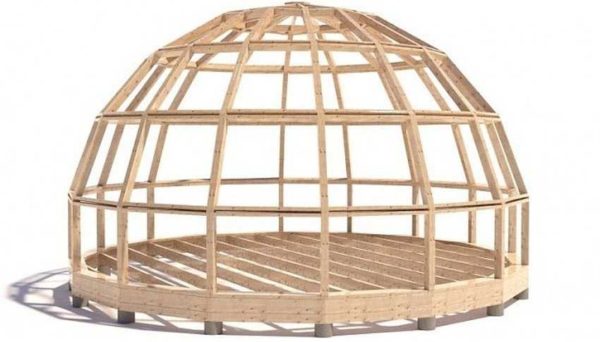
A stratodesic dome consists of rectangular-like fragments (a trapezoid with a slight slope of the sides)
This technology has its own assembly feature. The frame should be sheathed as the racks are installed. That is, the second row of racks is assembled only after the first is sheathed, the third row - after the second is sewn up with sheet material, etc. This is due to the fact that in an unfinished form - without sheathing - the frame has a high bearing capacity for vertical loads and is not very resistant to torsional loads. Once the edges are sheathed, it becomes very stable and reliable.
Unlike a geodesic dome, a stratodesic connector is not required for assembly. The vertical parts of the frame are connected using locks of a special shape. The horizontal lintels are fastened with a plate, which is fixed with bolts, under which a metal plate is laid.
There is one more nuance that affects the cost of a domed house. When cutting sheet material for a stratodesic dome, there are more scraps left than with a geodesic device. This increases the cost of materials to some extent. But they are compensated by the fact that windows and doors are used in a standard design, they are cheaper than triangular ones. As a result, the cost of the dome of different technologies is not much different.
Advantages and disadvantages
Nobody will argue with the fact that domed houses look unusual. If you want to have a house or dacha "not like everyone else's" and have nothing against frame housing construction, take a closer look at this technology. The solution is really non-standard. Besides, they say it is economical. The cost per square meter starts at $ 200. But as you can imagine, this is the minimum price. Such an economical option.
Pros of domed houses
In addition to the unusual appearance, the advantages of spherical houses are as follows:
- Optimal use of space. Rooms are obtained with a maximum floor area and a much smaller ceiling area. That is, the unused headspace is less.
- Smaller outer wall surface compared to standard rectangular designs.
- Less surface - less heat is dissipated in winter and heat is absorbed in summer. That is, the maintenance of such houses is more economical.
- On domed structures, precipitation lingers in very small quantities - it simply rolls off.
- The structure is light; a lightweight foundation is required for it. Usually - tape, but pile and pile-grillage are also good. On unstable soils it is possible to use slab foundation.
- Any number of windows can be built into the dome. This will not affect the stability of the structure.
- The small size of the house does not have load-bearing walls inside, so the cost of building materials is minimal. Large domed houses should have either load-bearing walls or support columns. But they can be placed almost anywhere, which allows them to be correlated with the desired layout.
- The structure of the dome allows optimal positioning solar panels.
- In dome-type buildings, it is convenient to arrange a ventilation, heating and air conditioning system. The point is in the rounded shape of the roof, which facilitates natural air mixing.
In terms of their characteristics, domed houses look very attractive. In addition, many say that much less money is required for the construction - due to the smaller surface of the walls, material is saved. According to mathematical calculations, the area of the walls is almost a third less. But if there is any savings, it will not be so big - the construction is specific, using specific components that increase the cost of construction. In fact, the cost per square meter turns out to be about the same as with frame construction the usual form.
Minuses
There are also disadvantages and they are also quite serious. In any case, it is worth knowing about them and taking them into account.
- It is difficult to calculate domed houses yourself. The calculation is done not in two, but in three planes, and this is not at all easy.
- The technology appeared not so long ago, there is no exact description and instructions.
- It is advisable to order such a project and construction from organizations that already have experience in the construction of spherical structures, but there are not so many of them.
- More waste of building materials remains, as they are sold mainly in rectangular blocks / sheets. This reduces the economic feasibility that arises from the smaller wall area.
- In geodesic domes, doors and windows of an unusual shape. They are made to order, and this is more expensive. The good news is that more and more firms can take on such an order, and this leads to lower prices.
- Limited choice of materials for outdoor decoration. Only two options are ideal for the roof - soft tile or wooden shingles. The rest of the materials are inconvenient due to their shape or rigidity. For exterior wall decoration, you can use the same material, but add more plaster and paint. There are projects in which the walls and "roof" are made of the same material. So the division is conditional.
- Due to the presence of rounded walls, the choice of finishing materials for walls in rooms is also limited. So large-format ceramic tiles in the bathroom and kitchen cannot be used, but the mosaic is perfect, but it is much more expensive. When finishing with clapboard, the wall area is divided into sections of small width, which are delimited by vertical planks. Approximately the same should be done when wallpapering the walls, but it does not look as colorful as with the clapboard. For the finishing of residential and "dry" technical premises, decorative plaster and wall painting are without problems.
There is also an unusual layout, but it will not work unambiguously to attribute it to disadvantages. I like domed houses precisely for their originality.So, the non-standard shape of the premises is, rather, a feature that must be taken into account when selecting / ordering furniture and choosing finishing materials.
Projects and layout features
It is far from easy to plan a round building so that it is rational, beautiful, and even convenient. There are a few basic tricks that most people follow. The first thing that catches your eye is that there simply cannot be corridors in such a house. They just have nowhere to lead. This is not bad, but it makes the layout of the house more difficult. Let's start with a simple one - how to arrange the entrance to the house.
Entry group
For our climate, it is desirable that the entrance doors go into a small room, and not into a large room. In this case, a small vestibule saves. O can be allocated from the general area or attached. A covered veranda performs approximately the same tasks. This is a more "civil" way to solve the problem.
Not everyone likes this approach. Today, there are other trends in the world - from the front door they get into a large spacious hall / living room. Such a layout is also possible, but additional measures are needed to cut off cold air - a heat curtain near the entrance. It is done using convectors built into the floor or by installing several powerful radiators near the door. The first method is more effective, the second is easier to execute. All these nuances are typical for domed houses. The only difference is that you have to puzzle over how to fit the built-in vestibule. The other two methods are easier to solve.
Let's look at the options for the device of the entrance group using examples. In the picture above, the right draft, the entrance doors open onto the living / dining room. This decision is typical for Europe and America. It is gradually gaining popularity here, but due to the harsher climate it often brings inconveniences - each door opening in winter brings a significant portion of cold air, which reduces comfort.
The option on the left is with an attached vestibule. There are two exits from the vestibule - one to the winter garden, the other to the kitchen / dining room. The solution is no less modern, but the problem of cold air entering the living quarters has been solved. So this idea is worth taking on board.
If it is decided to make the vestibule built-in, obviously, you will have to allocate some area of the house. The minimum is three squares (on the left project). It is logical if the living / dining room will be located further.
Another way is to allocate a large area and use it as a hallway. Place a wardrobe here, a hanger for things "for now" (draft law). If space permits, it will be possible to install a small sofa. For a frequent home, having a hallway is almost a necessity. Dirt and sand are less dragged into the house. And this is another argument in favor of a dedicated entrance group. Attached or fenced off - this is your choice. But the entrance area is convenient. In any case, in our reality.
Organization of space
Most often, the central part of the space of a domed house is allocated for a common room. From this central area, you can get to all the other rooms, which are located in a circle. In general, the central room turns out to be inconvenient, since it is "very passable".
It will not be possible to relax in it if it is a living room, it is not very convenient to cook in it, if an idea comes up to use this room as a kitchen, as a dining room it is also not the best option. Projects that use this space in this way are presented above. It looks great in the picture, but in real life it will not work to count on a chamber environment. So the passage rooms are not the most inhabited.
Not the worst way to use this walk-through area is by installing a ladder. After all, most of the domed houses have two floors, and here the screw just asksstairs... Just take into account that if you just twist it around the post, it will be inconvenient to use - too sharp turns are obtained. If you construct a staircase like a "well", it is difficult to build it yourself. So this part will have to be entrusted to someone.
Otherwise, domed houses are planned in the same way as ordinary ones. The basic rule to remember: to make engineering systems not very expensive, all "wet" rooms are located close to each other. The location of bedrooms, offices and other "dry" rooms - to your taste.
Related Videos
No matter how detailed the technology, its pros and cons, it is so difficult to get an accurate representation. We receive a significant part of information and impressions visually. Pictures and photos only help to give a partial overview. It's much better to see everything with your own eyes in video reviews.

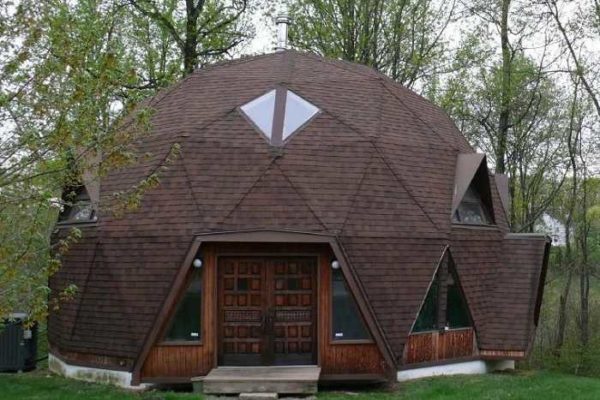
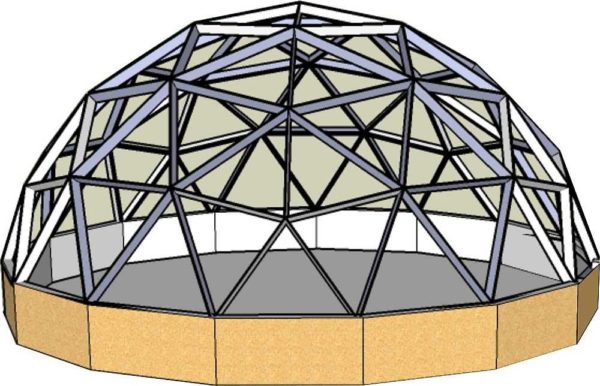
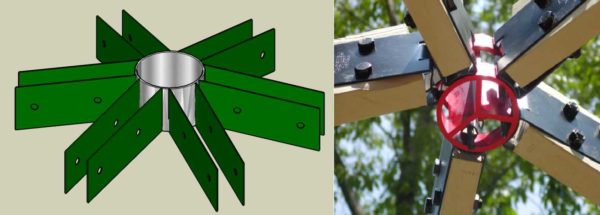
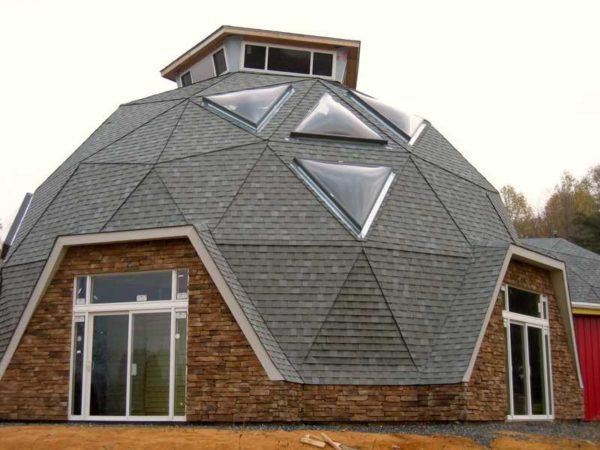
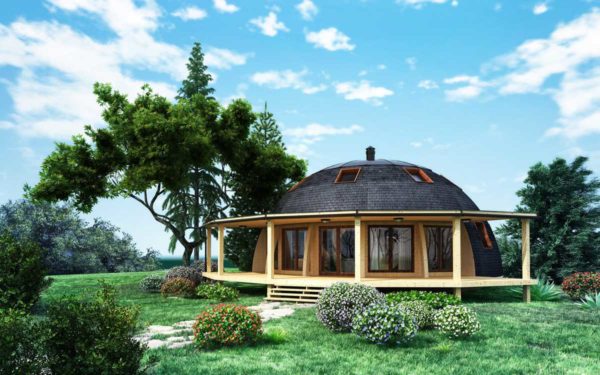
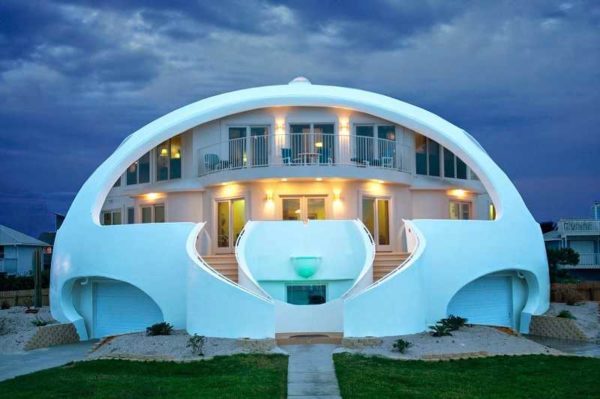
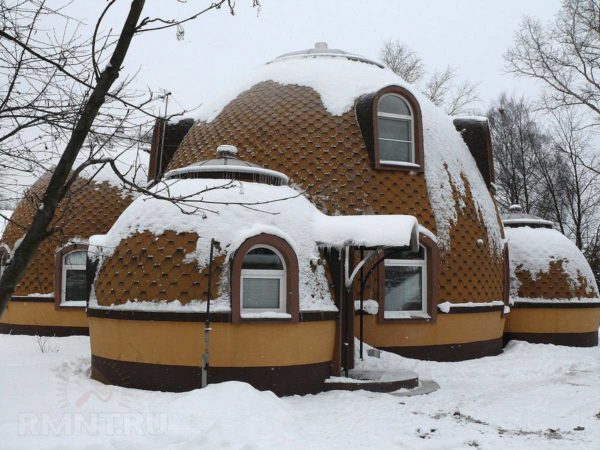
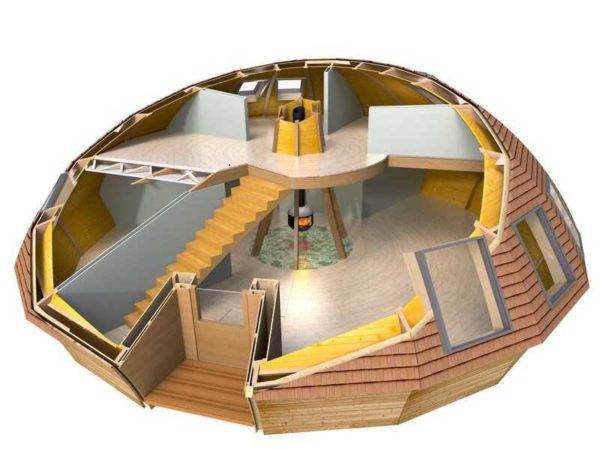
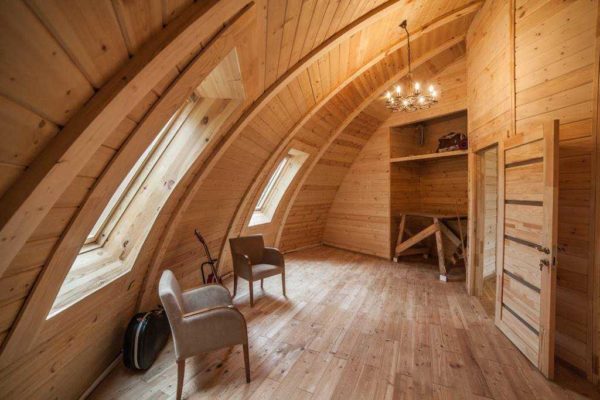
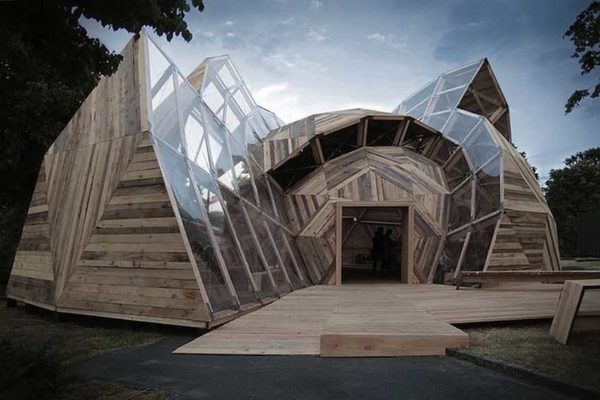
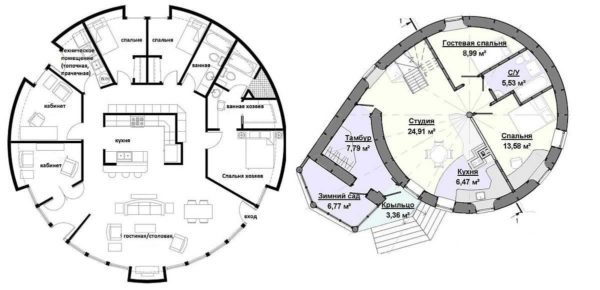
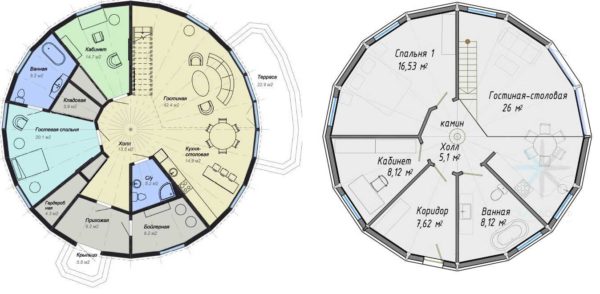
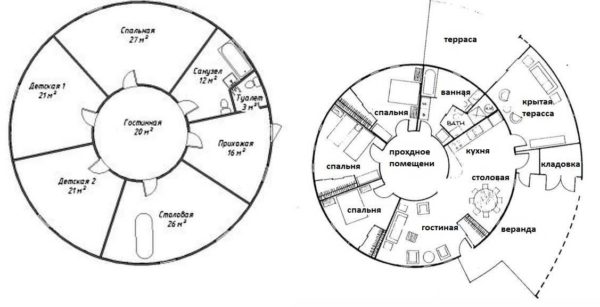
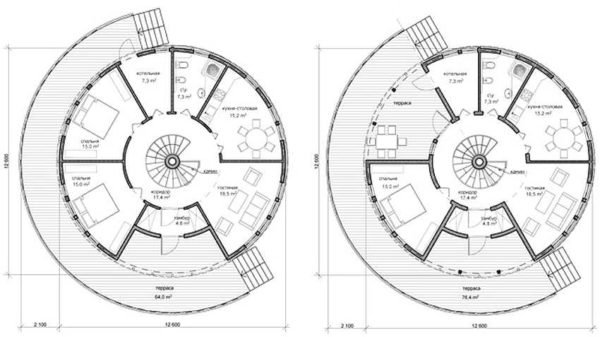










Good morning everybody ! My name is Vyacheslav. I'm finishing my next course on archicad! the domed houses themselves have been interesting to me for a long time! I would like to try to create them in the ARCHICAD program!
Vyacheslav, where do you live? Not in Pskov?